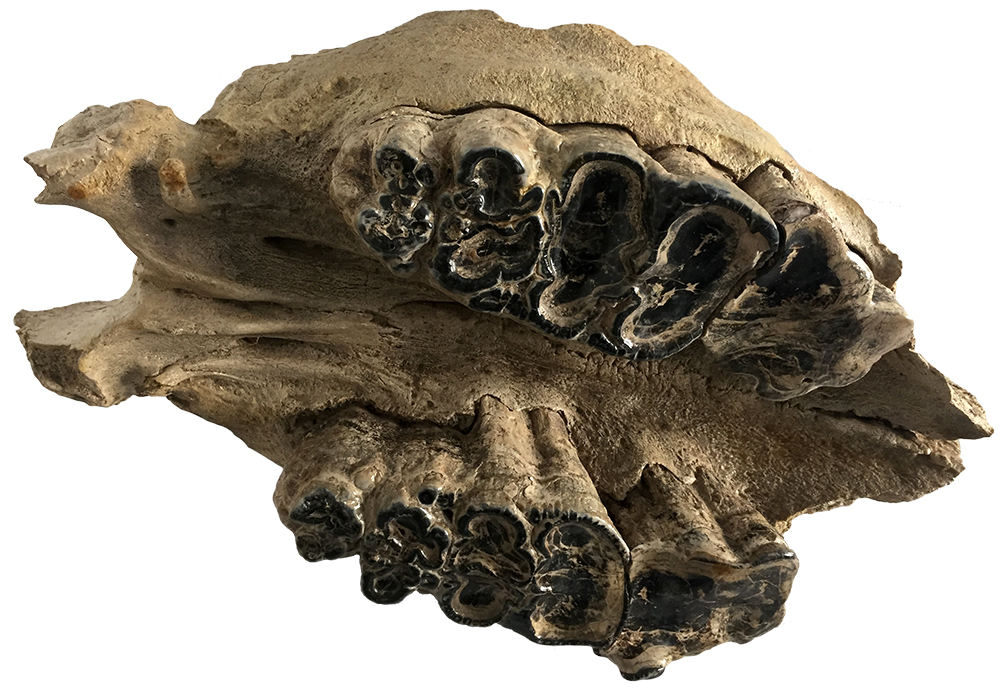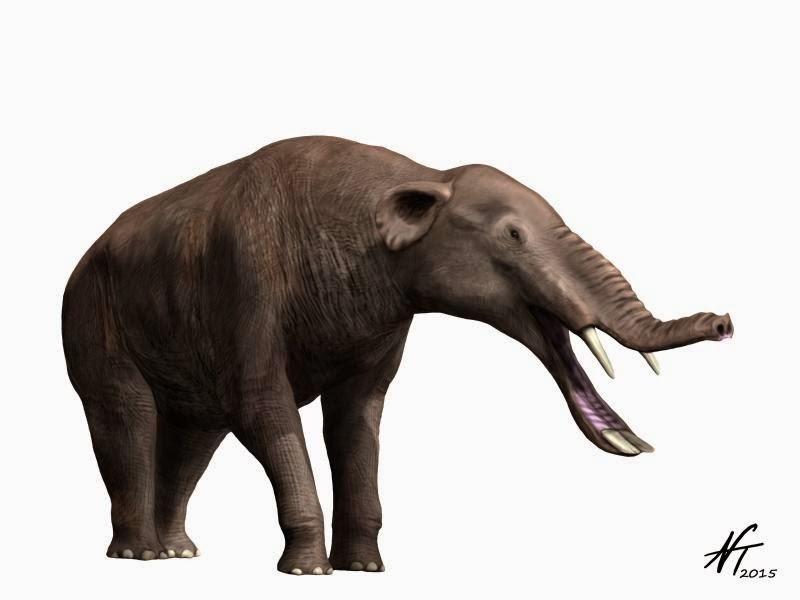
Miocene – Holocene (20 – 0.01 MYA)
Gomphotheres were elephant-like proboscideans related to, but not members of, the modern elephant family. They were more closely related to mastodons than to mammoths or living elephants yet were more derived than mastodons, suggesting a more recent origin. In turn, it appears one line of gomphotheres may have given rise to the later mammoths and mastodons.
Like all proboscidean lines, gomphotheres arose in Africa and only spread to other continents after the initial collision of Africa and Eurasia roughly 19 million years ago (MYA). They arrived in North America via Beringia by 16 MYA, but then their descendants had to wait until the Isthmus of Panama formed before they could enter South America before 2 MYA. Unlike most other proboscideans, early gomphotheres had four tusks, with an additional pair extending out from their elongated lower jaws. Although some later gomphotheres reduced or lost their lower tusks. Gomphothere in Greek means ‘welded beast’ or ‘peg beast’, which is a reference to the animals’ lower tusks.
At first glance, it might appear that several teeth line each side of this partial skull, but closer examination reveals there are only two teeth present on each side, with each tooth having 2 to 4 large crowns that have been heavily worn. Gomphotheres, like mastodons, mammoths, and living elephants, were among the few polyphyodonty mammals that replace their teeth throughout their lives instead of just having two sets of teeth. As each immense gomphothere tooth was worn away, it was replaced by another until the animal cycled through its allotment of teeth. The teeth erupted at the back of the jaw and then moved forward until they were worn away. This clever adaptation allowed gomphotheres to extend their lifespans, despite a diet of tough, abrasive plant material.
A cooling and drying climate led to an expansion of grasslands may have led to the decline of this savanna and forest living group in favor of their elephant cousins. However, some gomphothere lines continued on until roughly 11,000 years ago. The most recent gomphothere remains found were in South America and Mexico. Those remains were associated with human settlements and Clovis points, suggesting the group’s final extinction was due to human hunting.
